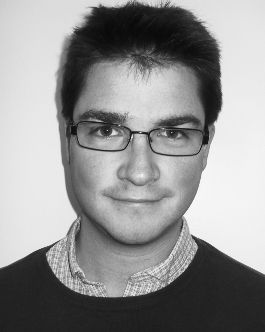Nicholas Hine

Dr Nicholas Hine
Visitor
Email: ndmh3 @ cam.ac.uk
Personal web site
TCM Group, Cavendish Laboratory
19 JJ Thomson Avenue,
Cambridge, CB3 0HE UK.
Research Group

Research
Please note that as of February 2015 I have moved to the University of Warwick as an Assistant Professor within the Theory Group at the Department of Physics. This page will become increasingly out of date but please see my personal webpage there.
Linear-Scaling DFT
The main technique I use is Density Functional Theory (DFT). DFT is a computational technique which makes a set of well-founded approximations about the way electrons interact with each other and with the nuclei of atoms. It boils down the complexity of many-body quantum mechanics to a form in which real problems can be solved on a computer. In most cases the approximations made turn out to be surprisingly accurate and very good predictions of the properties of real or putative materials can be made. Traditional approaches to DFT are capable of describing periodic crystals and small molecules, with a high accuracy. However, they involve solving for single-particle orbitals (solutions of a single-particle Schrodinger equation), which each span the entire system studied. The computational cost of approaches based on single-particle orbitals must inevitably scale up as the cube of the system size for large numbers of atoms. Therefore, they become pretty much unfeasible with current computational hardware beyond around 1000 atoms. The code with which I work and actively develop, known as ONETEP, is one of a few around the world which take a "Linear-Scaling" approach to DFT. Linear-Scaling DFT reformulates the problem so as to avoid ever calculating any eigenstates, and is therefore able to scale linearly with system size up to very large numbers of atoms. Linear-scaling DFT has many applications: anything where reaching large, realistic system sizes is important: biological physics, nanostructures, strongly-correlated systems, defects, interfaces and solvation models being just a few of these. These advances promise to bring the power of quantum-mechanical simulations to bear on systems of an unprecedented scale, for use in applications as diverse as the design of new drug molecules to specifically target particular diseases to the characterisation of nanomaterials for photovoltaic solar cells. I collaborate on a number of projects seeking to advance the methodology of LS-DFT, including projects on TDDFT, EELS, van der Waals, projector augmented wave methods, and many more!Defects in Metal Oxides
One of my other main interests is defects in crystals, particularly in metal oxides. With Matthew Foulkes and Mike Finnis, I have investigated the properties of point defects (particularly vacancies) in aluminium oxide (Al2O3). We have developed new techniques for extrapolation to the so-called "dilute limit", of well separated defects, which is particularly hard to achieve in calculations in a periodic crystal. We have also investigated the way concentrations of defects depend on the level of aliovalent doping, and developed a new framework for the self-consistent calculation of defect concentrations under doping. With Crispin Barnes and Massimo Barbagallo, I have investigated the properties of Europium Monoxide. Using DFT+U simulations of EuO with and without oxygen vacancies, we explained the enhancement of the magnetic moment of EuO under oxygen deficient conditions - a surprising result which may have implications for the use of EuO in spintronic devices. With Sam Murphy I have been investigating the strongly anisotropic defects in Lithium Metatitantate (Li2TiO3)Semiconductor Nanocrystals
I am working on a number of projects in the varied field of semiconductor nanostructures. One of these is pressure-induced phase transformations in nanocrystals, on which I supervise Niccolo Corsini in collaboration with Peter Haynes and Carla Molteni. I have also been involved in a long-running project to understand the behaviour of polar semiconductor nanorods. We have carried out large-scale simulations of GaAs nanorod structures to try to understand the behaviour of the dipole moment of such systems. The dipole moment is central to the unusual electrical and optical properties of nanorods, and is influenced by a wide array of factors, including the intrinsic polarisation of the underlying crystal, the range of possible shapes and surfaces, the surface termination by ligand species, and solution in a variety of solvents. Only simulation-based techniques are able to disaggregate the many factors and provide an understanding of how we can control and improve the properties of nanorods.
In Plain English
My research centres on the using computer simulations to understand materials, particularly materials with structure at the nanoscale (billionths of a meter). I use methods based on quantum mechanics to understand the `electronic structure' of materials, namely the allowed energy levelsof electrons bound to atomic nuclei.
I use techniques free from empirical approximations, known as "ab initio" methods, which allow us to make powerful predictions about materials and structures which have never been characterised, or in some cases never even been made! I design and maintain a code which is capable of simulating systems comprising thousands of atoms, which while still small on the everyday scale is very large in the context of atomistic simulations.
With this approach we can start to design and improve materials for use in fields as diverse as electronics, light-harvesting, chemical engineering, nanotechnology and medicine.
Featured Publications
- Point Defects and Non-stoichiometry in Li2TiO3 Chemistry of Materials 26 1629 - 1638 (2014)
- Mapping functional groups on oxidised multiwalled carbon nanotubes at the nanometre scale Chem. Comm. 50 6744 - 6747 (2014)
- Toward Ab Initio Optical Spectroscopy of the Fenna-Matthews-Olson Complex J. Phys. Chem. Lett. 4 4206 - 4212 (2013)
- On the growth of Al2O3 scales Acta Mater. 61 6670 - 6683 (2013)
- Simulations of nanocrystals under pressure: combining electronic enthalpy and linear-scaling density-functional theory. J. Chem. Phys. 139 084117 (2013) arXiv:1305.5862v2